Forrest Davis
Training an NLP Scholar at a Small Liberal Arts College: A Backwards Designed Course Proposal
Aug 11, 2024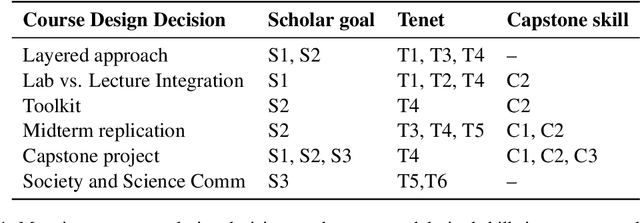
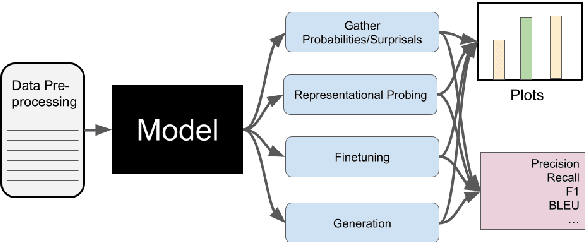

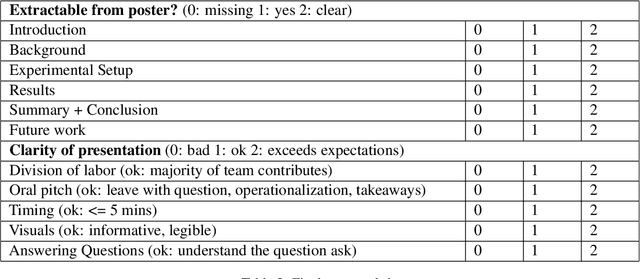
Abstract:The rapid growth in natural language processing (NLP) over the last couple years has generated student interest and excitement in learning more about the field. In this paper, we present two types of students that NLP courses might want to train. First, an "NLP engineer" who is able to flexibly design, build and apply new technologies in NLP for a wide range of tasks. Second, an "NLP scholar" who is able to pose, refine and answer questions in NLP and how it relates to the society, while also learning to effectively communicate these answers to a broader audience. While these two types of skills are not mutually exclusive -- NLP engineers should be able to think critically, and NLP scholars should be able to build systems -- we think that courses can differ in the balance of these skills. As educators at Small Liberal Arts Colleges, the strengths of our students and our institution favors an approach that is better suited to train NLP scholars. In this paper we articulate what kinds of skills an NLP scholar should have, and then adopt a backwards design to propose course components that can aid the acquisition of these skills.
Can Language Models Be Tricked by Language Illusions? Easier with Syntax, Harder with Semantics
Nov 02, 2023
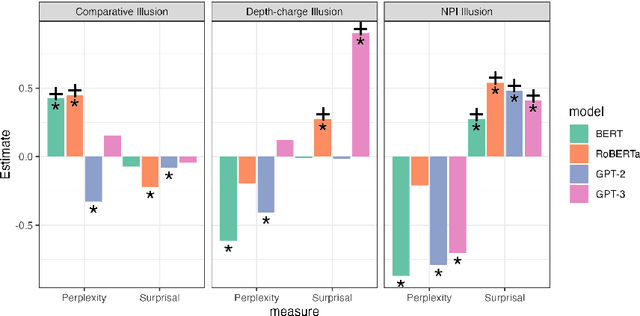
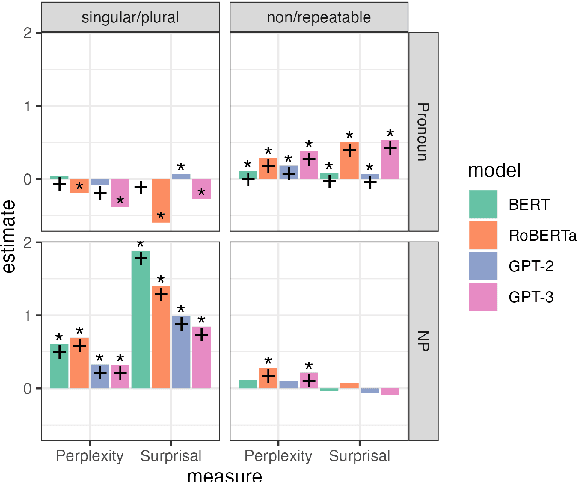

Abstract:Language models (LMs) have been argued to overlap substantially with human beings in grammaticality judgment tasks. But when humans systematically make errors in language processing, should we expect LMs to behave like cognitive models of language and mimic human behavior? We answer this question by investigating LMs' more subtle judgments associated with "language illusions" -- sentences that are vague in meaning, implausible, or ungrammatical but receive unexpectedly high acceptability judgments by humans. We looked at three illusions: the comparative illusion (e.g. "More people have been to Russia than I have"), the depth-charge illusion (e.g. "No head injury is too trivial to be ignored"), and the negative polarity item (NPI) illusion (e.g. "The hunter who no villager believed to be trustworthy will ever shoot a bear"). We found that probabilities represented by LMs were more likely to align with human judgments of being "tricked" by the NPI illusion which examines a structural dependency, compared to the comparative and the depth-charge illusions which require sophisticated semantic understanding. No single LM or metric yielded results that are entirely consistent with human behavior. Ultimately, we show that LMs are limited both in their construal as cognitive models of human language processing and in their capacity to recognize nuanced but critical information in complicated language materials.
Uncovering Constraint-Based Behavior in Neural Models via Targeted Fine-Tuning
Jun 02, 2021



Abstract:A growing body of literature has focused on detailing the linguistic knowledge embedded in large, pretrained language models. Existing work has shown that non-linguistic biases in models can drive model behavior away from linguistic generalizations. We hypothesized that competing linguistic processes within a language, rather than just non-linguistic model biases, could obscure underlying linguistic knowledge. We tested this claim by exploring a single phenomenon in four languages: English, Chinese, Spanish, and Italian. While human behavior has been found to be similar across languages, we find cross-linguistic variation in model behavior. We show that competing processes in a language act as constraints on model behavior and demonstrate that targeted fine-tuning can re-weight the learned constraints, uncovering otherwise dormant linguistic knowledge in models. Our results suggest that models need to learn both the linguistic constraints in a language and their relative ranking, with mismatches in either producing non-human-like behavior.
Discourse structure interacts with reference but not syntax in neural language models
Oct 10, 2020



Abstract:Language models (LMs) trained on large quantities of text have been claimed to acquire abstract linguistic representations. Our work tests the robustness of these abstractions by focusing on the ability of LMs to learn interactions between different linguistic representations. In particular, we utilized stimuli from psycholinguistic studies showing that humans can condition reference (i.e. coreference resolution) and syntactic processing on the same discourse structure (implicit causality). We compared both transformer and long short-term memory LMs to find that, contrary to humans, implicit causality only influences LM behavior for reference, not syntax, despite model representations that encode the necessary discourse information. Our results further suggest that LM behavior can contradict not only learned representations of discourse but also syntactic agreement, pointing to shortcomings of standard language modeling.
Recurrent Neural Network Language Models Always Learn English-Like Relative Clause Attachment
May 07, 2020



Abstract:A standard approach to evaluating language models analyzes how models assign probabilities to valid versus invalid syntactic constructions (i.e. is a grammatical sentence more probable than an ungrammatical sentence). Our work uses ambiguous relative clause attachment to extend such evaluations to cases of multiple simultaneous valid interpretations, where stark grammaticality differences are absent. We compare model performance in English and Spanish to show that non-linguistic biases in RNN LMs advantageously overlap with syntactic structure in English but not Spanish. Thus, English models may appear to acquire human-like syntactic preferences, while models trained on Spanish fail to acquire comparable human-like preferences. We conclude by relating these results to broader concerns about the relationship between comprehension (i.e. typical language model use cases) and production (which generates the training data for language models), suggesting that necessary linguistic biases are not present in the training signal at all.
 Add to Chrome
Add to Chrome Add to Firefox
Add to Firefox Add to Edge
Add to Edge